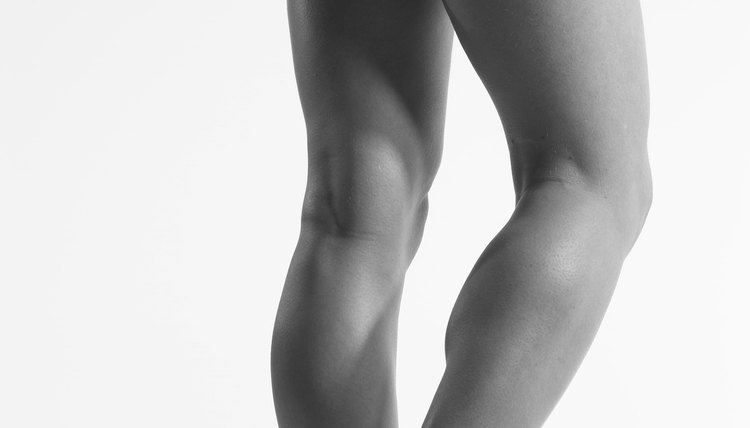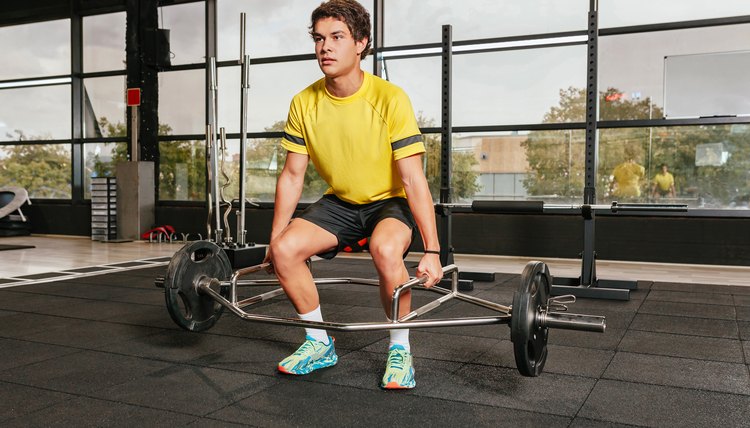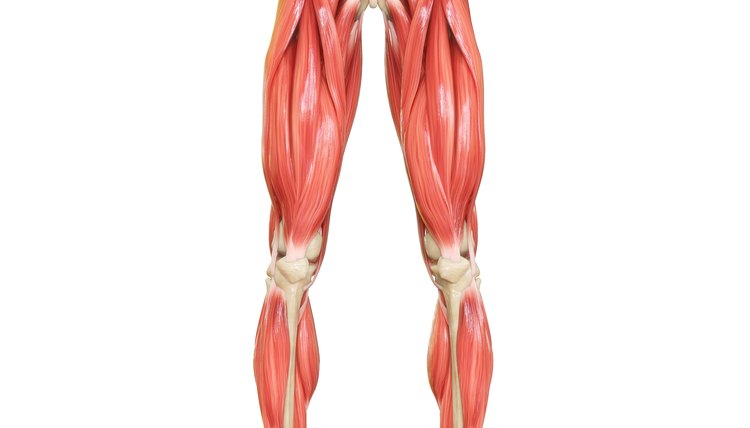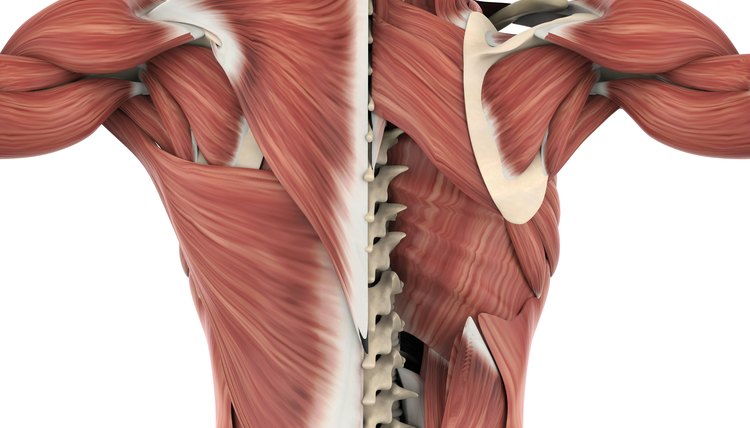Muscles Worked in a Hex Bar Squat (with Video)

Hex bars, or trap bars, may look unwieldy due to these modified barbells featuring open hexagonal centers, in which you stand in the middle, with handles on either side. But they allow you to do exercises you may not be able to do otherwise. Hex bars let those with back problems perform squats without putting strain on the back and shoulders. Because hex bar squats use the same motion as standard barbell squats, they work the same muscle groups.
What are the benefits of a Hex Bar?

Hemera Technologies/AbleStock.com/Getty Images
Unlike standard barbell squats, hex bars place the distribution of weight at hip-level. This lessens the stress on your back, reduces spinal compression, helps you maintain a straight back throughout the exercise and may reduce the risk of injury compared to barbell back squats or front squats. Hex bar squats cater to those with lower back and joint issues so that they can do powerlifting without fear of injuring themselves during the range of motion. Even for those without these issues, the hex bar may allow lifters to use heavier weight during reps due to its focus on stability and balance, as pointed out by strength coach Paul Gagne in a 2004 issue of "Bigger, Faster, Stronger." This makes the hex bar a must for strength training enthusiasts or those with a home gym.
How to do Hex bar squats with proper form?
Get into starting position by standing with your feet shoulder width apart like you would with a traditional barbell inside the hex. Hip hinge back into a squat position and grab the handles with a neutral grip or overhand grip. Then begin to stand up right utilizing your grip strength to pull the weight with you. Beginners should focus on avoiding lockout and maintaining proper form with each repetition.
Lower Body Muscles

Hemera Technologies/AbleStock.com/Getty Images
Squats have a well-earned reputation as a lower-body building exercise, and hex bar squats are no exception. While virtually any type of squat focuses on the thighs, Olympic weightlifting coach Charles Poliquin says on his official website that the hex bar puts an even greater emphasis on the quadriceps, or quads. Hex bar squats also create activation in the glutes, adductor magnus thigh muscles and soleus calf muscles as synergists, or muscles that help other muscles complete a movement. The hamstrings and calves serve as stabilizers, or muscles that help your body maintain a certain posture and help with lower body strength.
Core Muscles
As proper squatting form requires you to keep your core muscles engaged throughout the movement, hex bar squats build muscle in these groups. Core muscles involved include the rectus abdominis – commonly known as the “abs,” this muscle group forms the coveted “six pack” – and the transverse abdominis, the “deep abs” that lie under the rectus abdominis.
Other Muscles

Hemera Technologies/AbleStock.com/Getty Images
Squats work the erector spinae, the back muscles that run from the top of the neck to the tailbone, as a stabilizer. Likewise, standard squats and hex bar squats engage the obliques, the torso muscles that stretch from your upper rips to your pelvis. The hex bar overhead squat, an Olympic-style exercise for experienced lifters, especially encourages hip flexion.
Hex bars can be used for other exercises like the hex bar deadlift which is easier than traditional deadlift, barbell deadlift, dumbbell deadlift, or other deadlift variations on the upper back and neck. Be sure to consult with a personal trainer before beginning any full body exercise program.
References
Writer Bio
Blaise is a Freshman at the University of Missouri, studying Journalism at the world-renowned J school. He is the host of the Fast Five Podcast with his Childhood friend Sam Sinclair and interns with the Sports AI platform Pine Sports. He is a huge fan of the Kansas City Chiefs and the St Louis. Cardinals and hopes to cover them professionally in his near future.
